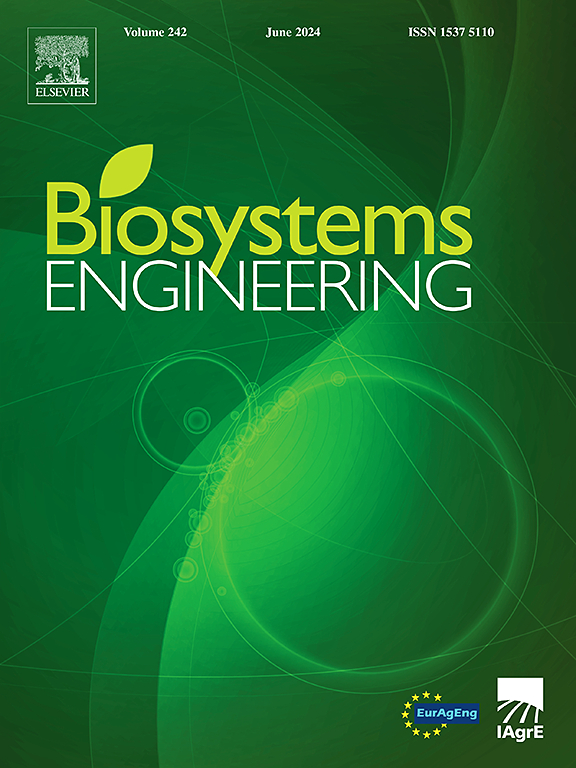Permeability prediction of bulk wheat for storage based on micro-computed tomography and lattice Boltzmann method
IF 4.4
1区 农林科学
Q1 AGRICULTURAL ENGINEERING
引用次数: 0
Abstract
During the study of grain storage ecosystems, the microstructure and permeability of bulk grain porous media are critical, which can influence fluid flow efficiency and mass transfer efficiency. In this study, the 3D pore structure of bulk grain porous media was reconstructed by X-ray micro computed tomography, and fluid permeability was investigated by the multi-relaxation-time (MRT) lattice-Boltzmann method (LBM). The results show that the representative elementary volume (REV) with voxel 3003 has a porosity of 34.78 % and an average pore diameter of 1241.37 μm, which can not only reflect the pore structures of the bulk grain pile, but also satisfy the subsequent permeability simulation calculations. The permeability results calculated by LBM can be used to visualise the fluid flow in the bulk grain pore space, and the comparison of the results with the Kozeny–Carman (K–C) equation, the Xu-Yu model, and the experimentally measured permeability demonstrates the accuracy and feasibility of the MRT-LBM method proposed in this paper for simulating the permeability of the bulk grain pile. The method provides a novel way for the research of grain storage ecosystem by numerical simulation method, which is conducive to the study of fluid flow and heat and moisture transfer mechanism in grain storage.
基于微计算机断层扫描和晶格玻尔兹曼方法的散装小麦储层渗透率预测
在粮食储运生态系统研究中,颗粒体多孔介质的微观结构和渗透率是影响流体流动效率和传质效率的关键因素。本研究采用x射线显微计算机断层扫描技术重建了块状颗粒多孔介质的三维孔隙结构,并采用多松弛时间(MRT)晶格-玻尔兹曼方法(LBM)研究了流体渗透率。结果表明:体素为3003的代表性基本体积(REV)孔隙率为34.78%,平均孔径为1241.37 μm,既能反映颗粒堆体孔隙结构,又能满足后续渗透率模拟计算;通过与Kozeny-Carman (K-C)方程、Xu-Yu模型以及实测渗透率的对比,验证了本文所提出的MRT-LBM方法模拟大块颗粒桩渗透率的准确性和可行性。该方法为采用数值模拟方法研究粮食储库生态系统提供了一条新的途径,有利于研究粮食储库中的流体流动和热湿传递机理。
本文章由计算机程序翻译,如有差异,请以英文原文为准。
求助全文
约1分钟内获得全文
求助全文
来源期刊

Biosystems Engineering
农林科学-农业工程
CiteScore
10.60
自引率
7.80%
发文量
239
审稿时长
53 days
期刊介绍:
Biosystems Engineering publishes research in engineering and the physical sciences that represent advances in understanding or modelling of the performance of biological systems for sustainable developments in land use and the environment, agriculture and amenity, bioproduction processes and the food chain. The subject matter of the journal reflects the wide range and interdisciplinary nature of research in engineering for biological systems.
 求助内容:
求助内容: 应助结果提醒方式:
应助结果提醒方式:


